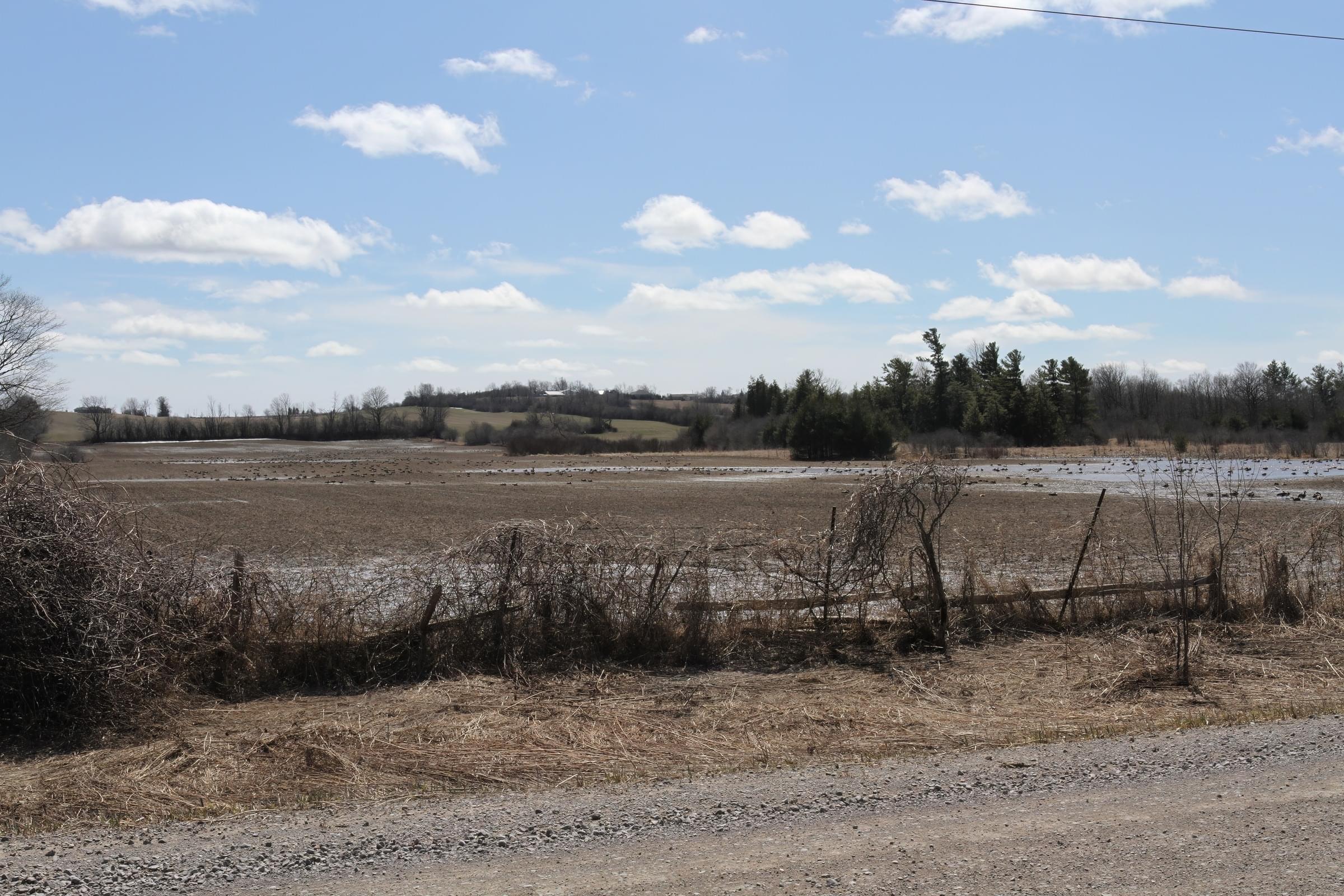Bailieboro--Second Line Rd flooded fields

Bailieboro--Second Line Rd flooded fields
Tips for Birding
Although these fields can be worth visiting at any time of day, as there can be considerable turnover in the number and diversity of species hour-to-hour, early mornings and evenings are generally best. The waterfowl, particularly the geese can be quite skittish, so drive up to the site slowly and either remain in your vehicle or exit it slowly, closing the doors quietly and scanning the flocks from a position that utilizes the shrubby hedgerow or your vehicle as partial cover. A spotting scope is pretty much essential at this location.
Birds of Interest
In March, several thousand migrant Canada Geese may be present and occasionally among them individuals of Cackling, White-fronted and Snow geese. Mallard, Northern Pintail, American Black Duck, Green-winged Teal and Wood Duck, in that order, are the most common species of dabbling ducks. If the fields remain wet through April and into the latter half of May, shorebirds of several species may be encountered, including Dunlin, Least, Semipalmated, Pectoral, Solitary and Spotted sandpipers, both yellowlegs and Semipalmated Plover. American Pipits are among the regular migrants and Horned Lark and Vesper Sparrow nest here.
About this Location
Located on the south side of the Otonabee-South Monaghan 2nd Line Road this roughly 25-ha site is includes harvested cornfields and an adjacent willow-dogwood thicket swamp that experience annual spring flooding. In all but the driest years much of the northern half of the cornfield is inundated attracting thousands of waterfowl of several species.
In addition to regular vehicle traffic, tractors and other farm machinery regularly use this road, so be sure to park your vehicle as far off the road as possible. All the land on both sides of the road is in private ownership and should not be entered.
Content from Donald A Sutherland
Last updated March 25, 2024